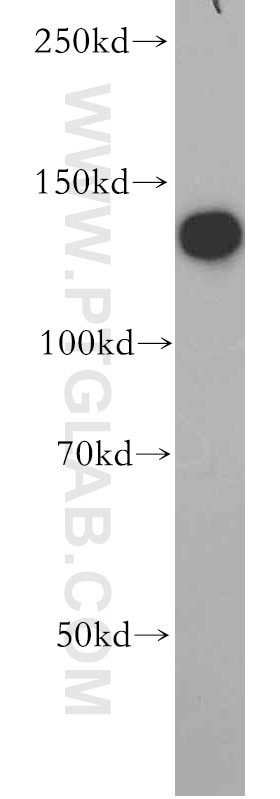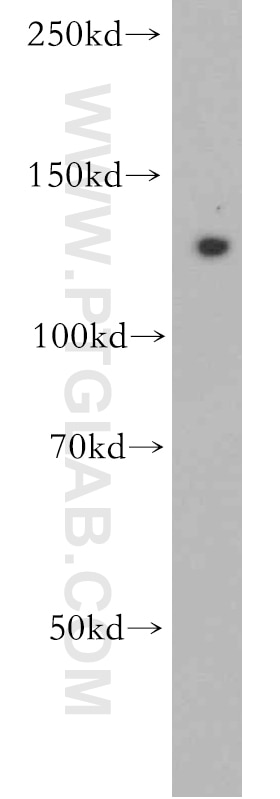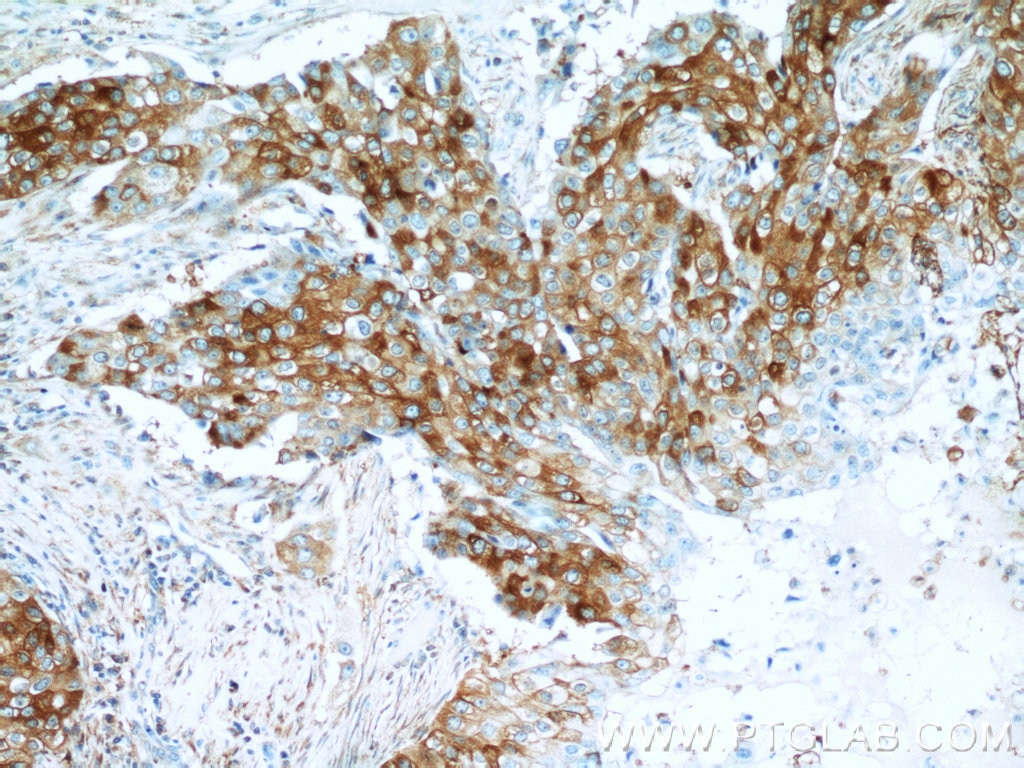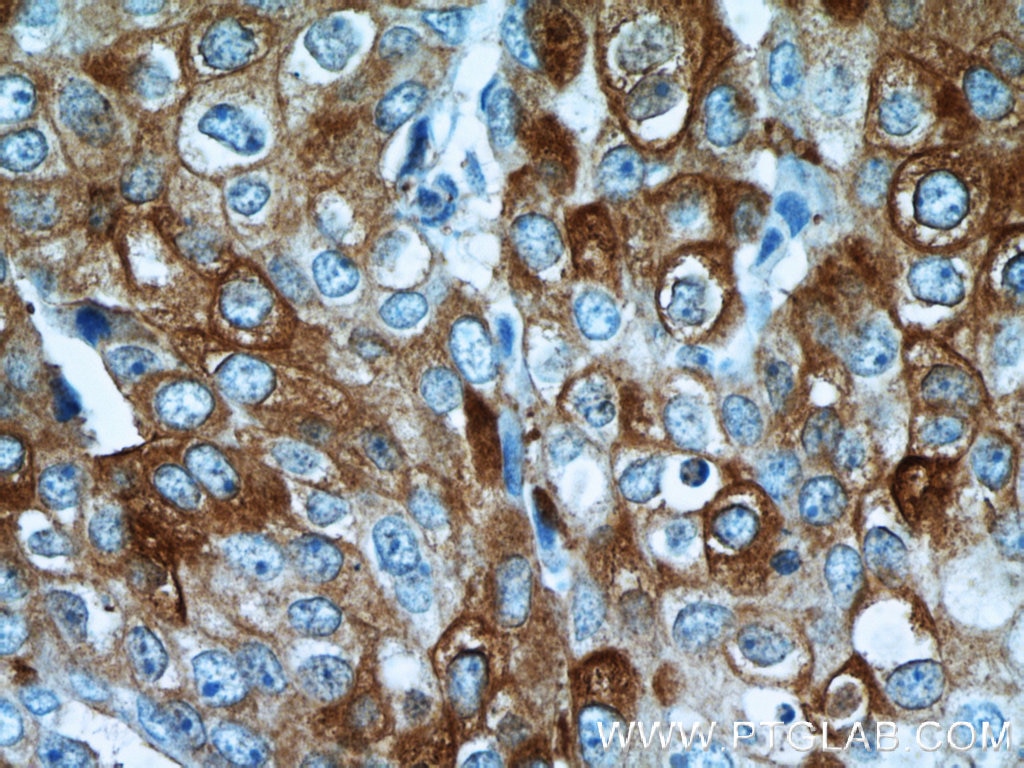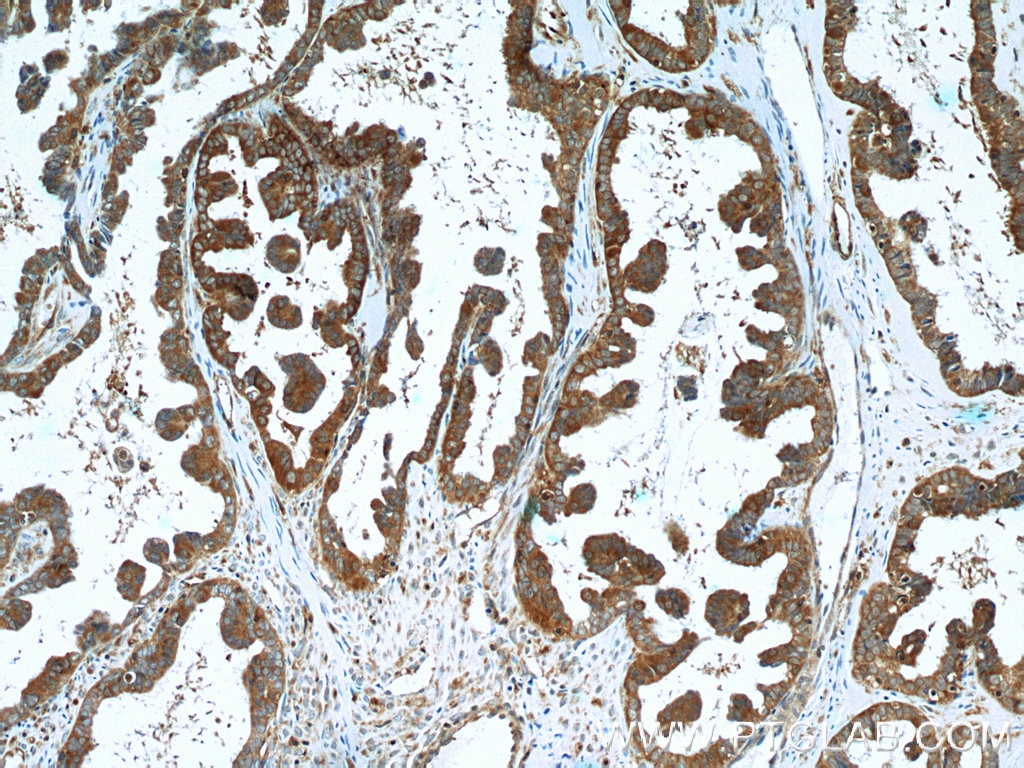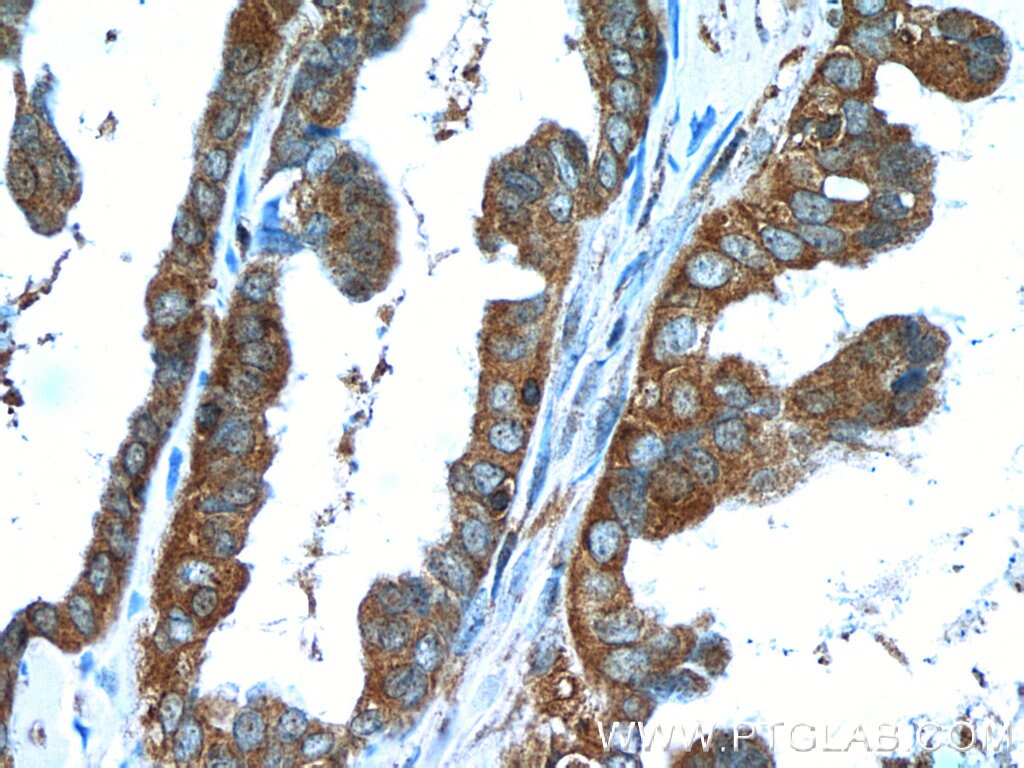ROR1 Polyklonaler Antikörper
ROR1 Polyklonal Antikörper für WB, IHC, ELISA
Wirt / Isotyp
Kaninchen / IgG
Getestete Reaktivität
human, Maus, Ratte
Anwendung
WB, IF, IHC, ELISA
Konjugation
Unkonjugiert
Kat-Nr. : 20629-1-AP
Synonyme
Geprüfte Anwendungen
| Erfolgreiche Detektion in WB | K-562-Zellen, HeLa-Zellen |
| Erfolgreiche Detektion in IHC | humanes Mammakarzinomgewebe, humanes Ovarialkarzinomgewebe Hinweis: Antigendemaskierung mit TE-Puffer pH 9,0 empfohlen. (*) Wahlweise kann die Antigendemaskierung auch mit Citratpuffer pH 6,0 erfolgen. |
Empfohlene Verdünnung
| Anwendung | Verdünnung |
|---|---|
| Western Blot (WB) | WB : 1:500-1:2000 |
| Immunhistochemie (IHC) | IHC : 1:20-1:200 |
| It is recommended that this reagent should be titrated in each testing system to obtain optimal results. | |
| Sample-dependent, check data in validation data gallery | |
Veröffentlichte Anwendungen
| WB | See 2 publications below |
| IHC | See 4 publications below |
| IF | See 1 publications below |
Produktinformation
20629-1-AP bindet in WB, IF, IHC, ELISA ROR1 und zeigt Reaktivität mit human, Maus, Ratten
| Getestete Reaktivität | human, Maus, Ratte |
| In Publikationen genannte Reaktivität | human, Ratte |
| Wirt / Isotyp | Kaninchen / IgG |
| Klonalität | Polyklonal |
| Typ | Antikörper |
| Immunogen | ROR1 fusion protein Ag14586 |
| Vollständiger Name | receptor tyrosine kinase-like orphan receptor 1 |
| Berechnetes Molekulargewicht | 937 aa, 104 kDa |
| Beobachtetes Molekulargewicht | 130-140 kDa |
| GenBank-Zugangsnummer | BC006374 |
| Gene symbol | ROR1 |
| Gene ID (NCBI) | 4919 |
| Konjugation | Unkonjugiert |
| Form | Liquid |
| Reinigungsmethode | Antigen-Affinitätsreinigung |
| Lagerungspuffer | PBS with 0.02% sodium azide and 50% glycerol |
| Lagerungsbedingungen | Bei -20°C lagern. Nach dem Versand ein Jahr lang stabil Aliquotieren ist bei -20oC Lagerung nicht notwendig. 20ul Größen enthalten 0,1% BSA. |
Hintergrundinformationen
ROR1 is a member of the RTK family of orphan receptors related to muscle specific kinase and Trk neurotrophin receptors (PMID: 18546292). ROR1 is primarily expressed by neural crest cells during embryogenesis. High expression of ROR1 is reported in many types of malignancies and is thought to be involved in tumor growth, apoptosis, and epithelial-mesenchymal transition (PMID: 26245996). The human ROR1 gene encodes a 937-amino acid protein with an Ig-like domain, a cysteine-rich domain, a kringle domain, a tyrosine kinase domain and a proline-rich domain. The calculated molecular weight of ROR1 is 104 kDa, but ROR1 has multiple N-glycosylation sites that generate post-translationally modified ROR1 at 130 kDa (PMID: 24752542).
Protokolle
| PRODUKTSPEZIFISCHE PROTOKOLLE | |
|---|---|
| WB protocol for ROR1 antibody 20629-1-AP | Protokoll herunterladen |
| IHC protocol for ROR1 antibody 20629-1-AP | Protokoll herunterladenl |
| STANDARD-PROTOKOLLE | |
|---|---|
| Klicken Sie hier, um unsere Standardprotokolle anzuzeigen |
Publikationen
| Species | Application | Title |
|---|---|---|
Virchows Arch Expression of ROR1 has prognostic significance in triple negative breast cancer. | ||
Medicina (Kaunas) Meta-Analysis of Survival Effects of Receptor Tyrosine Kinase-like Orphan Receptor 1 (ROR1) | ||
Biomedicines ROR1 Is Expressed in Diffuse Large B-Cell Lymphoma (DLBCL) and a Small Molecule Inhibitor of ROR1 (KAN0441571C) Induced Apoptosis of Lymphoma Cells. | ||
Cancer Manag Res Wnt5a induces ROR1 and ROR2 to activate RhoA in esophageal squamous cell carcinoma cells. | ||
Am J Physiol Cell Physiol Periodontal Ligaments Enhance Neurite Outgrowth in Trigeminal Ganglion Neurons through Wnt5a Production Induced by Mechanical Stimulation |
